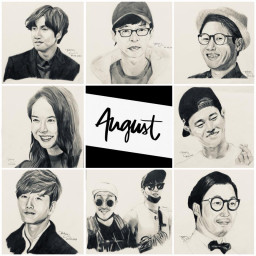VII. Insert a suitable word in each of the blanks to finish the following passage.
MINERALS
Do you remember the last time you picked up a pebble? Maybe it was as clear as glass. Minerals formed the colors and patterns (61) ______ the pebble. A mineral is a solid, nonliving substance (62) _____ occurs naturally in rocks or in the ground. Every mineral has unique properties. The Earth’s surface is rock, a solid substance made of minerals. Rock can be made of many minerals or of (63) ______ mineral with different-sized grains.
There are more than 4,000 minerals. Marty of them look alike. Scientists use the minerals' physical properties to (64) ______ them apart. For example, scientists can compare the hardness of two minerals by (65) . easily they can be scratched. Gypsum and calcite can look alike, but gypsum is easier to scratch than calcite.
The way a mineral reflects light is its luster. Two minerals may be the same color, but one (66) _____ have a shiny luster and the other a dull luster.
When you rub a mineral across a surface, the mineral leaves a streak of powder. This colored (67) ______ can help scientists identify two minerals ihat look alike.
Minerals have other properties, too. Is the mineral magnetic? What shape are its crystals? Two minerals might look (68) ______ and share some properties, but they don’t share all properties. Gold and pyrite are (69) ______ shiny and gold in color. Pyrite is sometimes called 'fools’ gold' because people have (70) ______ it for gold. Gold is much softer than pyrite. Gold leaves a golden streak. Pyrite's streak is greenish black.VIII. Read the following passage and choose the correct answer to each of thequestions.
There are many theories about the beginning of drama in ancient Greece. The one most widely accepted today is based on the assumption that drama evolved from ritual. The argument for this view goes as follows, in the beginning, human beings viewed the natural forces of the world, even the seasonal changes, as unpredictable, and they sought through various means, to control these unknown and feared powers. Those measures which appeared to bring the desired results were then retained and repeated until they hardened into fixed rituals. Eventually stories arose which explained or veiled the mysteries of the rites. As time passed some rituals were abandoned, but the stories, later called myths, persisted and provided material for art and drama.
Those who believe that drama evolved out of ritual also argue that those rites contained the seed of theater because music, dance, masks, and costumes were almost always used. Furthermore, a suitable site had to be provided for performances, and when the entire community did not participate, a clear division was usually made between the "acting area" and the "auditorium." In addition, there were performers, and since considerable importance was attached to avoiding mistakes in the enactment of rites, religious leaders usually assumed that task. Wearing masks and costumes, they often impersonated other people, animals, or supernatural beings, and mimed the desired effect - success in hunt or battle, the coming rain, the revival of the Sun - as an actor might. Eventually such dramatic representations were separated from religious activities.
Another theory traces the theater's origin from the human interest in storytelling. According to this view, tales (about the hunt, war, or other feats) are gradually elaborated, at first through the use of impersonation, action, and dialogue by a narrator and then through the assumption of each of the roles by a different person. A closely related theory traces theater to those dances that are primarily rhythmical and gymnastic or that are imitations of animal movements and sounds.
71. What does the passage many discuss?
A. The origins of theater B. The role of ritual in modern dance
C. The importance of storytelling D. The variety of early religious activities
72. The word “they" in line 4 refers to ______.
A. seasonal changes B. natural forces
C. theories D. human beings
73. What aspect of drama does the author discuss in the first paragraph?
A. The reason for dramas often unpredictable
B. The seasons in which dramas were performed
C. The connection between myths and dramatic plots
D. The importance of costumes in early dramas
74. Which of the following is NOT mentioned as a common element of theater and ritual?
A. Dance B. Costumes C. Music D. Magic
75. The word "considerable" in line 15 is closest in meaning to ______,
A. thoughtful B. substantial C. relational D. ceremonial
76. The word "enactment" in line 15 is closest in meaning to ___________.
A. establishment B. performance C. authorization D. season
77. The word "they" in line 16 refers to _____.
A. mistakes B. costumes C. animals D. performers
78. According to the passage, what is the main difference between ritual and drama?
A. Ritual uses music whereas drama does not.
B Ritual is shorter than drama
C. Ritual requires fewer performers than drama.
D. Ritual has a religious purpose and drama does not.
79. The passage supports which of the following statements?
A. No one really knows how the theater began.
B. Myths are no longer represented dramatically.
C. Storytelling is an important part of dance.
D. Dramatic activities require the use of costumes.
80. Where in the passage does the author discuss the separation of the stage and the audience?
A. Lines 8-9 B. Lines 12-14
C. Lines 19-20 D. Lines 22-24


















